
PwC's Global Risk Survey indicates that organizations committed to business risk management are significantly more likely to achieve positive business outcomes and stakeholder confidence. Such entities are five times more likely to gain this advantage. Additionally, these organizations are twice as likely to anticipate accelerated revenue growth. Remember, irrespective of your business’ size, there will be potential risks. Therefore, as a business leader, you must prioritize business risk management as a critical component of your role and the long-term success of your organization.
Inadequate management of business risks can lead to severe consequences, including financial losses, safety violations, strategic failures, loss of management credibility, and more. Such mishaps often occur when companies set overly restrictive risk parameters, overlook apparent risks, fail to search for latent risks, communicate poorly, or respond inadequately to real-time challenges. In enterprise management, overseeing a portfolio of projects is vital for comprehensive risk management. How can leaders ensure that risks across multiple projects are effectively managed?
Business risks are frequently mismanaged when companies fail to grasp the true essence of risk management or lack the commitment to manage their business risks rigorously. Utilizing AI-powered predictive analytics is one transformative approach to enhancing project success. These tools allow for proactively identifying and mitigating potential risks by analyzing patterns and predicting outcomes based on current data rather than solely on historical precedents. This capability improves decision-making and enhances real-time responses to unforeseen challenges. How might your organization benefit from integrating AI-driven analytics into your risk management strategy?
This article will discuss why business risk management is essential, how to manage it, and how modern technology solutions like AI-powered predictive analytics techniques help organizations evolve, enabling faster execution of risk mitigation controls and effective organizational changes.
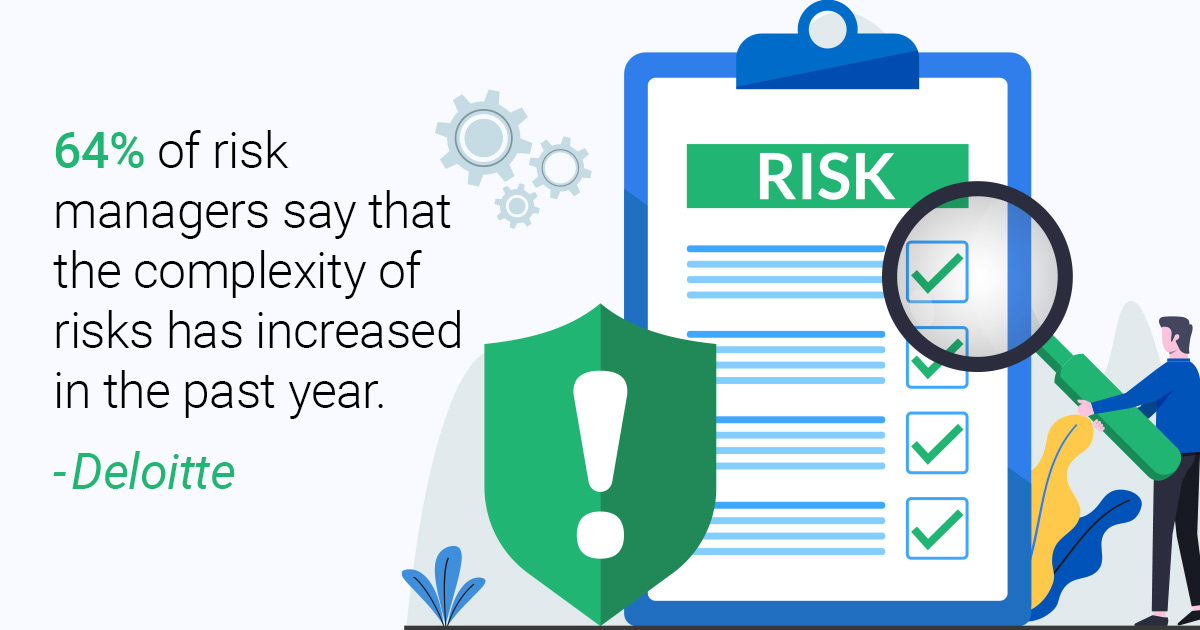
Why is Business Risk Management Critical?
“Competing successfully in any industry involves some level of risk,” states Robert Simons, a Harvard Business School Professor and instructor of the online course Strategy Execution. “But high-performing businesses with high-pressure cultures are especially vulnerable. As a manager, you must know how and why these risks arise and how to avoid them,” he adds.
Managing business risk is crucial for large corporations with dedicated risk management departments and small business owners who handle risk personally. The primary goal is safeguarding the company against potential financial, physical, or technological disruptions. Here are four reasons why the management of business risk is crucial:
Safeguarding Organizational Reputation
Effective risk management can preemptively shield an organization from incidents that could tarnish its reputation. Simons points out that franchise risk is critical for businesses that rely heavily on the trust of their stakeholders. Delta Airlines, for example, encountered a significant setback in 2016 with a national computer outage that led to the cancellation of over 2,000 flights. This incident cost Delta approximately $150 million and impacted its reputation for reliability. Today, with vast data accessible across various operational sectors, you can leverage this information to enhance performance by optimizing the management of personnel, finances, and equipment.
Reducing Financial Losses
A proactive approach to business risk management allows you to allocate resources more efficiently to each initiative or project, prioritize tasks based on risk exposure, and implement contingency plans that minimize the impact of unforeseen events. Effective risk management ensures your initiatives or projects remain on schedule and within budget, safeguarding the company from costly delays and errors. It also fosters a culture of risk awareness among project leaders, team members, and stakeholders, leading to better decision-making throughout the project lifecycle. Utilizing AI for business and project risk management helps you accurately predict outcomes, allowing you to address risks before they materialize. Fascinating, isn’t it?
Fostering Innovation and Growth
Addressing risk in a business through projects or initiatives offers a structured approach to identifying, analyzing, and mitigating potential threats to a company's objectives. Simons highlights that 83% of business strategies prioritize growth despite potential risks. Therefore, companies must adapt and evolve their business risk management strategies to maintain competitiveness and foster innovation. This keeps them resilient and competitive in fast-evolving markets.
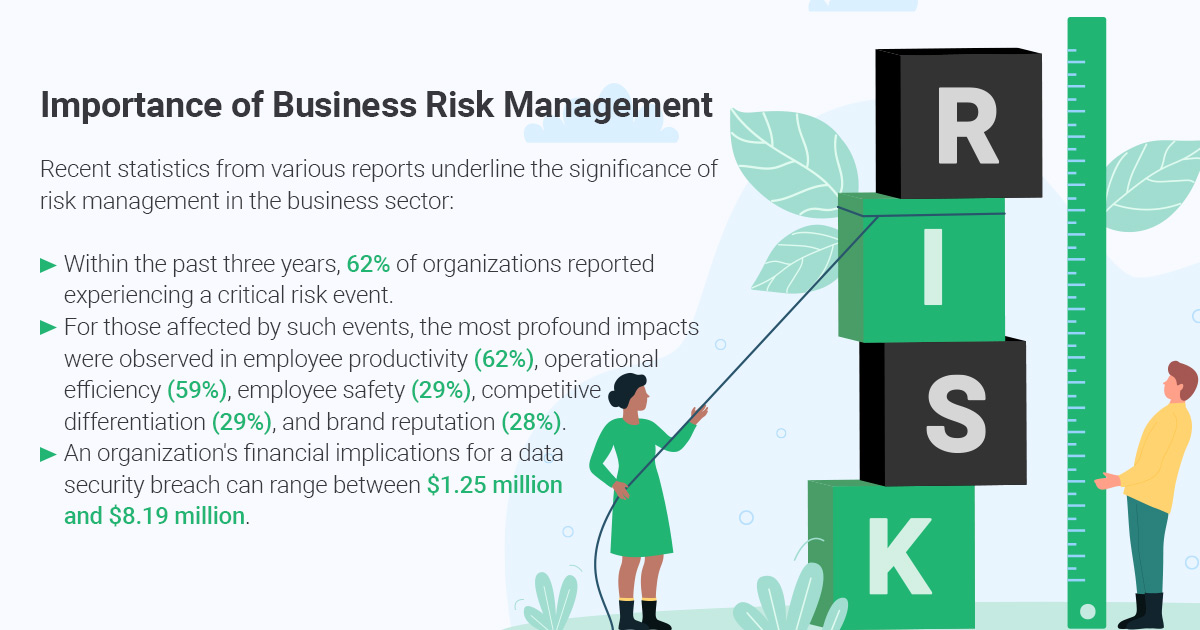
Improving Decision-Making
Business risk management strategies require you, the business leaders, to plan for how you will explain and justify the business decisions and assess whether you have adequately anticipated potential failures and flaws. Additionally, assessing risks in businesses and projects aids in preventing the deepening commitment to projects that carry unmanageable risks. Remember, human decision-making can often rely on previous experiences, incorrect beliefs, or instinct, leading to minor inaccuracies or more significant errors. Proactively using technology like predictive intelligence in decision-making helps mitigate potential threats effectively.
Developing a Robust Business Risk Management Process
Understanding Business-Specific Risks
Start by comprehending the different risks related to the key drivers of your organization's business strategy. Conduct a thorough analysis of your company’s business operations, projects, and initiatives, considering internal and external factors that could disrupt them. Evaluate the effectiveness of your existing task and project management tools and processes in managing these risks and assess the likelihood of their occurrence.
Steps to Implement Business Risk Management Strategies
- Risk Identification: To pinpoint potential risks, examine the internal and external elements influencing your projects or initiatives.
- Risk Analysis: Measure and quantify the potential impacts of identified business risks, preparing for various scenarios.
- Risk Response: Develop strategies to mitigate identified risks by implementing or revising new processes.
- Risk Monitoring: Continuously track and document the risks and opportunities within your industry, including specific financial risks and the effectiveness of your risk management practices.
Incorporating Accountability
Accountability is a cornerstone of your enterprise risk management framework. Assign a senior project leader to take charge of risk management duties. Consider establishing a risk management committee with specific roles, enhancing focus and expertise in handling diverse aspects of enterprise risks.
These steps will help solidify your organization's approach to risk management, ensuring a proactive stance toward potential threats and opportunities.
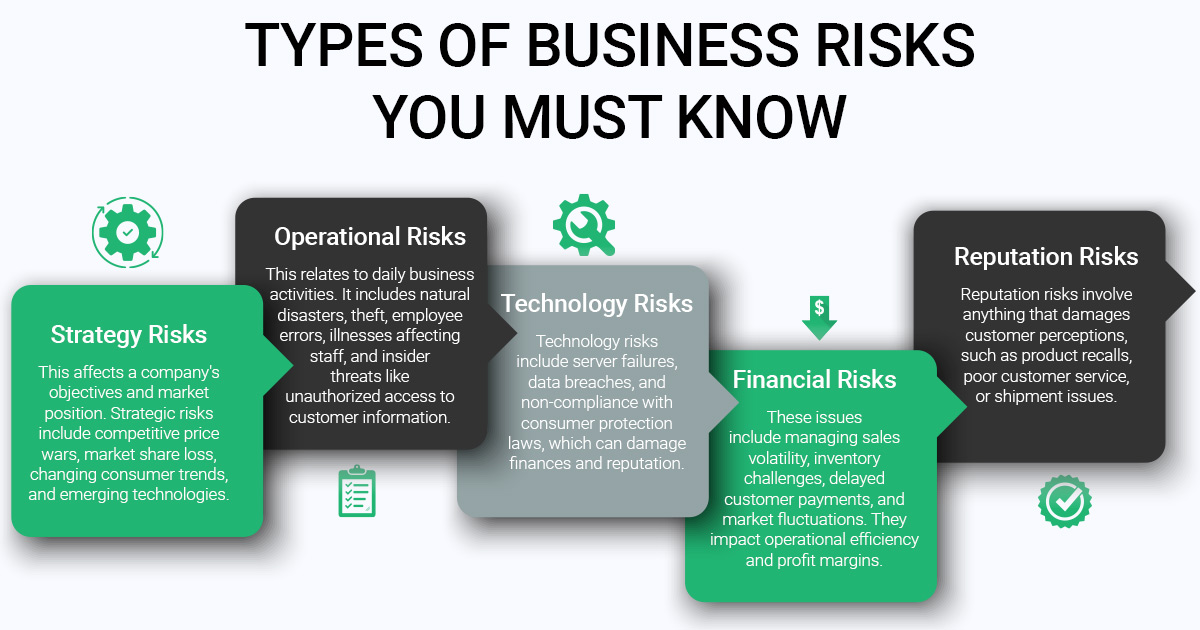
Growing Importance of Predictive Analytics in Business Risk Management
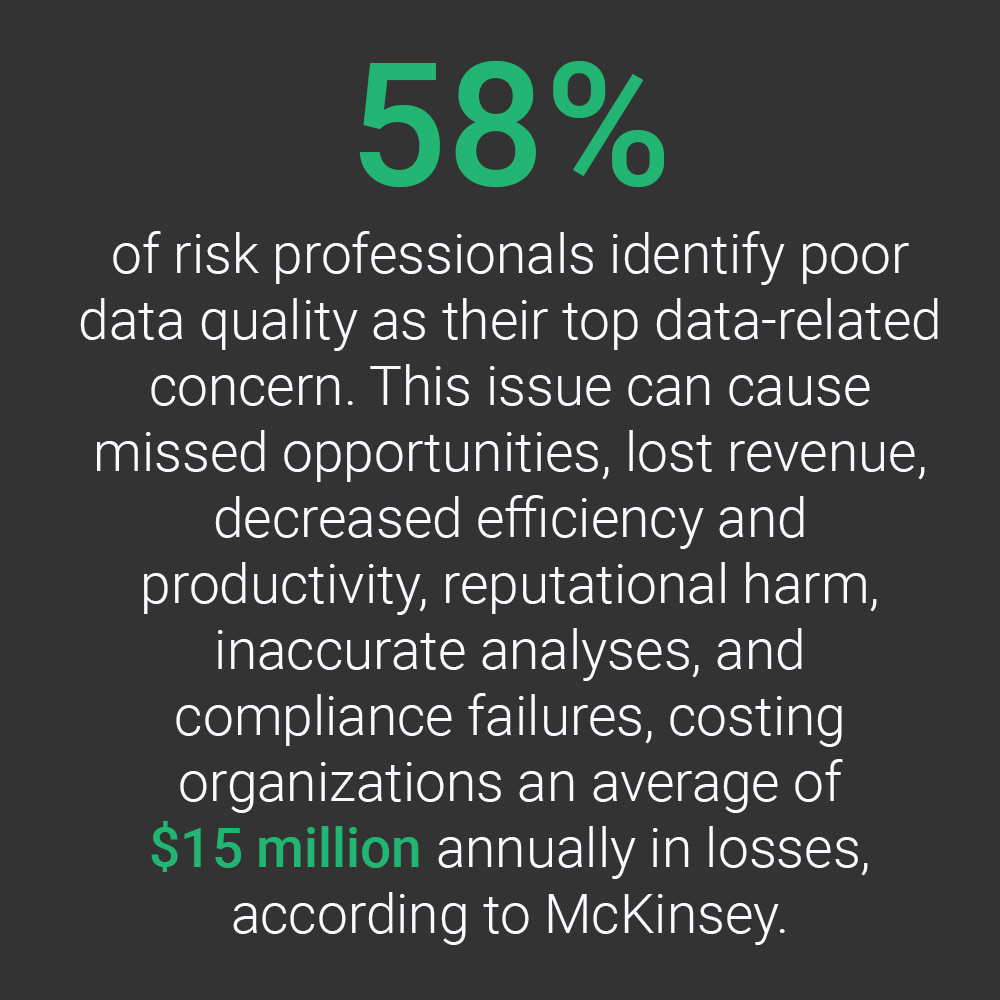 Being competitive in today’s dynamic market requires addressing various project or initiative challenges, such as customer or stakeholder expectations shifting and rapid technological advancements. In this context, advanced technologies like artificial intelligence and machine learning are increasingly employed for business risk management, allowing businesses to assess risks and the potential drawbacks of high-risk decisions. Predictive analytics solutions for managing business risks are versatile and can be effectively implemented for projects or business initiatives across various industries, including construction, healthcare, banking, and telecommunication.
Being competitive in today’s dynamic market requires addressing various project or initiative challenges, such as customer or stakeholder expectations shifting and rapid technological advancements. In this context, advanced technologies like artificial intelligence and machine learning are increasingly employed for business risk management, allowing businesses to assess risks and the potential drawbacks of high-risk decisions. Predictive analytics solutions for managing business risks are versatile and can be effectively implemented for projects or business initiatives across various industries, including construction, healthcare, banking, and telecommunication.
Predictive analytics solutions involve analyzing current and historical data to forecast future events. Through predictive analytics, organizations can handle complex problems, recognize new opportunities, and identify potential risks. Forecasting future trends is one of the most valuable uses of predictive analytics in the business sector. Analysts can delve into complex datasets using statistical algorithms and machine learning to identify underlying trends. These insights are then used to predict future customer behaviors and likely events. Such trend predictions can be applied to various business functions, including marketing initiatives, IT project execution, and supply chain operations.
Effectively utilizing predictive risk analytics is pivotal for organizations aiming to become more agile and responsive. This approach facilitates quicker implementation of risk mitigation measures and more efficient organizational transformations. Well, have you implemented predictive analytics to manage business risk yet?
What’s the Way Ahead?
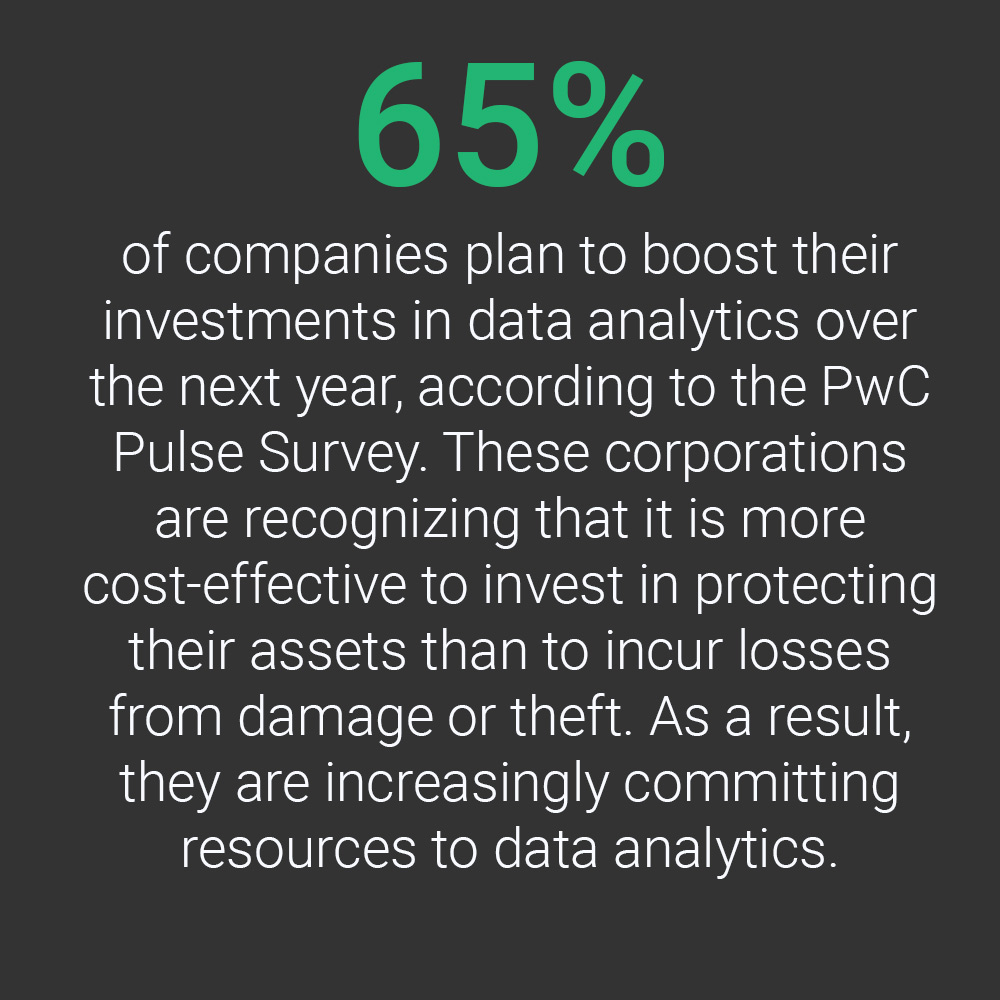 Embracing business risk management is not merely a protective measure but a strategic imperative for sustained growth and resilience in today’s volatile market environment. Organizations that neglect the critical aspect of strategic business risk management planning are jeopardizing their operational integrity and future viability. The integration of AI-powered predictive analytics represents a revolutionary stride in preemptively identifying and mitigating potential risks, thus fortifying the foundation of any business against unforeseen adversities. By embedding such advanced technologies into their risk management frameworks, companies are not merely protecting their assets. They also enhance their decision-making processes, ensure sustainable growth, and maintain a competitive edge.
Embracing business risk management is not merely a protective measure but a strategic imperative for sustained growth and resilience in today’s volatile market environment. Organizations that neglect the critical aspect of strategic business risk management planning are jeopardizing their operational integrity and future viability. The integration of AI-powered predictive analytics represents a revolutionary stride in preemptively identifying and mitigating potential risks, thus fortifying the foundation of any business against unforeseen adversities. By embedding such advanced technologies into their risk management frameworks, companies are not merely protecting their assets. They also enhance their decision-making processes, ensure sustainable growth, and maintain a competitive edge.
If you are looking for one such solution, look no further than TrueProject. TrueProject is a powerful PM solution that utilizes AI-powered insight and predictive analytics to augment the functionalities of your existing project management tools. It offers features like a central PM health dashboard, providing real-time insights to proactively address potential project management issues. Know precisely which KPIs are risking your projects’ progress and business success. No more guessing games or surprises—TrueProject empowers you with the knowledge to overcome project and business risks.
As business leaders, the question isn't whether you can afford to implement predictive analytics but whether you can afford not to. The time to act is now—embrace these transformative technologies and steer your organization toward a future marked by resilience and success.
About the Author:
 Nivedita Gopalakrishna is a content marketing specialist within the TrueProject Marketing team with extensive experience in blog writing and website content creation across diverse industries. Nivedita’s proficiency in crafting engaging blog posts and informative website content is a testament to her years of experience. Beyond her prowess in written communication, Nivedita has a knack for creating visually appealing static graphics that have played a pivotal role in expanding TrueProject's marketing efforts. Through thoughtful design choices, she has helped convey the essence of the brand and captivate audiences effectively. Outside the professional sphere, Nivedita is a trained classical singer and a fitness enthusiast, embodying creativity and wellness in and out of the office.
Nivedita Gopalakrishna is a content marketing specialist within the TrueProject Marketing team with extensive experience in blog writing and website content creation across diverse industries. Nivedita’s proficiency in crafting engaging blog posts and informative website content is a testament to her years of experience. Beyond her prowess in written communication, Nivedita has a knack for creating visually appealing static graphics that have played a pivotal role in expanding TrueProject's marketing efforts. Through thoughtful design choices, she has helped convey the essence of the brand and captivate audiences effectively. Outside the professional sphere, Nivedita is a trained classical singer and a fitness enthusiast, embodying creativity and wellness in and out of the office.
Endnotes:
- “What Is Risk Management in Business?” WGU. May 19, 2020. https://www.wgu.edu/blog/what-risk-management-business2003.html
- Gibson, Kate. “WHAT IS RISK MANAGEMENT & WHY IS IT IMPORTANT?” Harvard Business School Online. October 24, 2023. https://online.hbs.edu/blog/post/risk-management
- “How to create a business risk management plan for your company.” Allianz Trade. August 18, 2021. https://www.allianz-trade.com/en_global/news-insights/business-tips-and-trade-advice/business-risk-management.html
- Houston, Melissa. “Risk Management For Your Business: What You Need To Know.” Forbes. January 11, 2023. https://www.forbes.com/sites/melissahouston/2023/01/11/risk-management-for-your-business-what-you-need-to-know/?sh=3d8259134a04
- “Risk Management Statistics 2024 — 45 Key Figures.” Procurement Tactics. February 04, 2024. https://procurementtactics.com/risk-management-statistics/#:~:text=According%20to%20a%20report%20by,of%20robust%20risk%20management%20strategies
- “Predictive Analytics for Risk Management: Uses, Types & Benefits.” PREDIK Data-Driven. (n.d.). https://predikdata.com/predictive-analytics-for-risk-management/
- “Business Risk Management: Types of Risk and How To Manage.” Shopify. June 02, 2023. https://www.shopify.com/blog/business-risk-management




